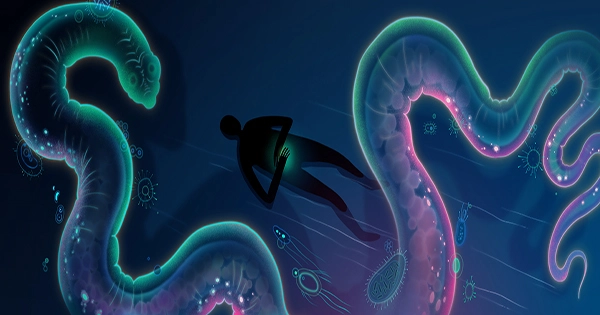Have you ever wrecked a night out by behaving out when suffering from hanger? Researchers at the Salk Institute have shown that even worms make dubious judgments when they’re hungry, and the findings reveal chemical roots for how our stomach communicates with our brain. In a statement, Sreekanth Chalasani, associate professor in Salk’s Molecular Neurobiology Laboratory and senior author of a work published in PLOS Genetics, said, “Animals, whether it’s a lowly worm or a complex human, all make decisions to feed themselves to live.”
“Molecular mobility at the subcellular level might be influencing these decisions, and it could be essential to all animal species,” says the researcher. The study used the Caenorhabditis elegans tiny worm as a model to learn how the stomach sends out hunger signals to change an organism’s behavior. To accomplish so, they use a wall of worm repellant in the form of copper sulfate to separate the worms from a food supply. Would a worm-risk their life to breach the hazardous barrier for a meal?
Yes, they would, according to the findings, with a two-to-three-hour famine phase being enough to lead C. elegans to make the hasty choice to breach the barrier. They next examined the worms more closely to see what was causing this behavior. C. elegans is morphologically simpler than humans, yet we have numerous chemical commonalities, as luck would have it. This makes them a good model organism since their far more study-friendly body designs provide researchers with useful information.
Two transcription factor proteins, MML-1, and HLH-30, were shown to be active in the gut molecules of the hungry worms. Hungry worms were no longer ready to cross the deadly copper sulfate line for a meal after the researchers removed them. It’s conceivable that these same proteins are responsible for humans’ behavioral responses to hunger, such as yelling when you need food. Molly Matty, a postdoctoral fellow in Chalasani’s group, commented, “C. elegans are smarter than we give them credit for.”
“Their intestines detect a shortage of food and alert the brain.” These transcription factor movements, we believe, are what lead the animal to make a risk-reward decision, such as crossing a difficult barrier to get to the food.” The next stage for the researchers is to investigate how transcription factor proteins switch between active and inactive states, and how this relates to our understanding of why humans would occasionally put their lives on the line for a sandwich.















